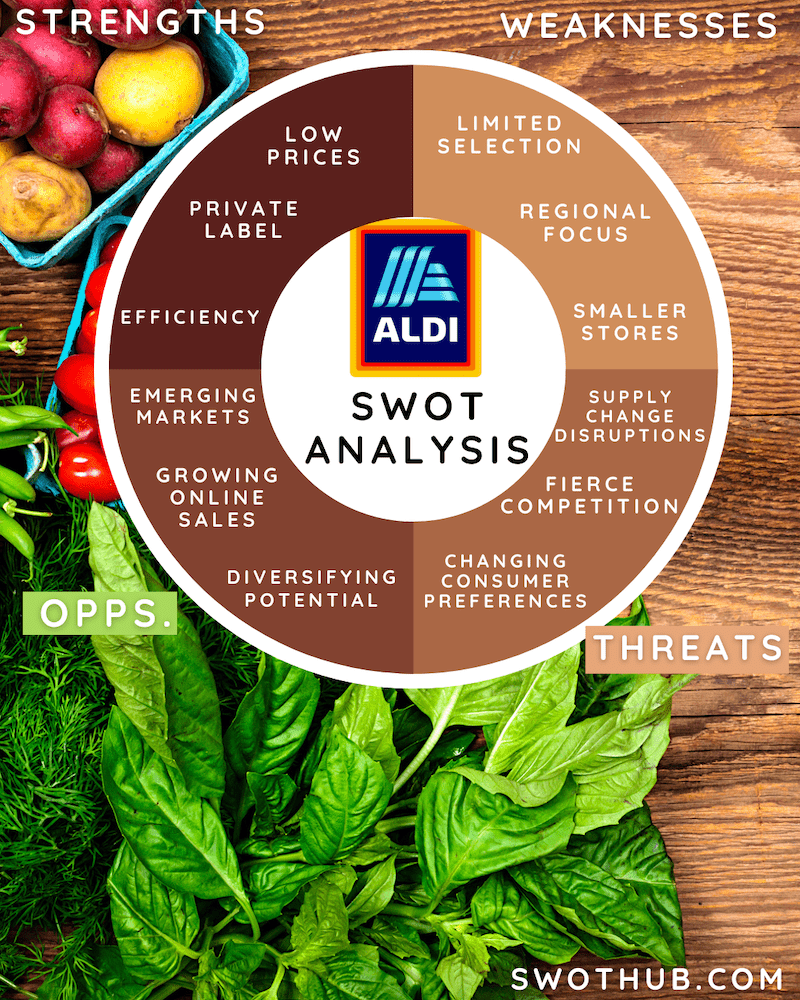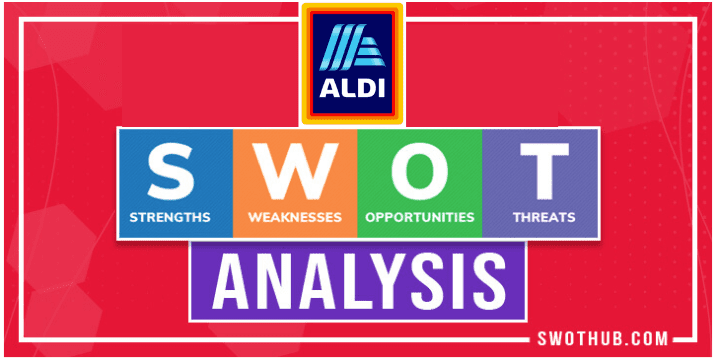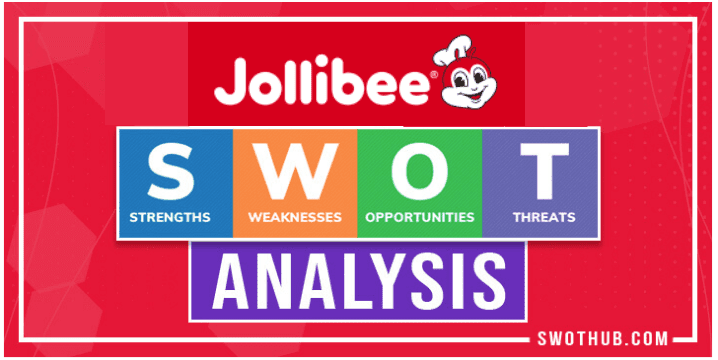The retail grocery and food business industry has become a highly competitive market, especially in recent years with the onset of the pandemic and people needing to stay home and have grocery deliveries. In this Aldi SWOT analysis, we look at how this German discount supermarket disrupted the grocery industry and soon made its way to being a worldwide grocery brand. With stiff competition from online grocers, Target and Kroger, see if this ambitious small grocery can stay ahead of Aldi’s competitors in the grocery industry.
Table of Contents
Aldi’s History:
Aldi is a German discount supermarket chain that was founded in 1946 by brothers Karl and Theo Albrecht. The name Aldi is short for “Albrecht Discount.” The company started as a small grocery store in Essen, Germany, but it quickly expanded into a larger chain.
In the 1950s, the brothers decided to split the company into two separate entities, Aldi Nord and Aldi Süd, to avoid conflicts over whether to sell cigarettes or not. Aldi Nord operates in northern Germany, while Aldi Süd operates in southern Germany. Today, both companies are still owned by the Albrecht family and operate independently of each other.
If you’ve heard of the popular American grocery chain, Trader Joe’s, most shares are owned by Aldi Nord. Joe Coulombe, the company’s original founder, opened the first location in Pasadena, California, in 1958. Over time, the chain slowly expanded, and German billionaire Theo Albrecht, the owner of Aldi Nord, eventually bought it. Trader Joe’s is owned by Aldi Nord, but the two businesses function separately.
The foundation of Aldi’s business strategy is providing premium goods at competitive prices. Aldi uses a small number of brands and buys its products directly from manufacturers to accomplish this. To keep costs down, Aldi also keeps its stores small and uncomplicated, with few frills or decorations, and charges customers for shopping bags.
In an Aldi SWOT Analysis determined that Aldi opened its US headquarters in 1976 in Batavia, Illinois. Ever since, Aldi has expanded outside of Germany and now runs more than 11,000 stores in 20 nations, including the United States, the United Kingdom, Australia, and China. To keep up with shifting consumer preferences, Aldi has also made significant investments in online sales and delivery services recently.
Aldi SWOT Analysis At-A-Glance
| Company | Aldi |
| US Store | Aldi US |
| Industry | Retail Grocery |
| Founder(s) | Karl Albrecht, Theo Albrecht |
| Year founded | 1916 – Germany /1976 – US |
| CEO | Jason Hart |
| Headquarters | Essen, Germany / Batavia, Illinois – US |
| Number of employees | 203,600 – worldwide/ 25,000 – US (2021) |
| Revenue (FY 2022) | US $121.1 Billion (2021) |
…
Aldi SWOT Analysis:
A SWOT analysis is a framework used to assess a company’s competitive situation and to create strategic planning. By taking Aldi’s strengths, and weaknesses of Aldi’s threats of Aldi as well as opportunities of Aldi into account, we may better gain in-depth knowledge about Aldi company. In this article, we’ll be taking a look at Aldi’s SWOT framework to better understand its competitive position and potential for future growth. See how Aldi competitors fare against them and learn about Aldi’s Strengths, weaknesses, opportunities, and Aldi threats.
What is the SWOT analysis of a Supermarket?
The areas where a company excels above average or in a manner that distinguishes it from its rivals are its strengths. Aldi’s strengths are outlined in this Aldi SWOT analysis.
Aldi has disrupted the grocery industry in the United States in several ways and can be considered Aldi’s strengths
Aldi SWOT Analysis Strengths:
. Here are a few examples of Aldi’s strengths against its competitors:
Price: Aldi has disrupted the conventional supermarket model with its business strategy of selling high-quality goods at low prices. Because of Aldi’s frequently lower prices than those at other grocery stores, rivals have been under pressure to do the same.
Private label: Aldi heavily relies on private-label goods because they are frequently less expensive than name-brand goods. As a result, Aldi has been able to maintain low prices while still providing a wide selection of goods.
Limited selection: Aldi stores are smaller than traditional supermarkets and offer a limited selection of products. While this may seem like a disadvantage, it allows Aldi to keep costs low and provide a more efficient shopping experience for customers.
Efficiency: Aldi stores are made to be very efficient. Customers are required to bring their own bags, and merchandise is displayed in shipping boxes. This improves checkout efficiency and lowers costs.
Customer focus: Aldi places a strong emphasis on customer satisfaction, offering a “Double Guarantee” policy that allows customers to return products for a refund or replacement if they are not satisfied.
Overall, Aldi’s disruptive business model has forced other grocery stores to rethink their strategies and has given consumers more options for affordable, high-quality groceries.
Aldi SWOT Analysis Weaknesses:
Weaknesses of a company are those that limit its potential, make it less competitive, and prevent it from achieving its goals. In this section of the Aldi SWOT analysis, we’ll look at Aldi weaknesses. In a SWOT analysis, some of their weaknesses compared to competitors include:
Limited selection: While Aldi’s constrained selection helps it operate more effectively and save money, it might be a weakness in terms of customer preferences. Some clients might favor a larger range of goods that Aldi does not provide.
Smaller stores: Aldi’s stores are smaller than traditional supermarkets, which may be a disadvantage in terms of customer experience. Crowded stores with limited space may turn off some customers.
Lack of brand recognition: Aldi’s private label products are often cheaper than name-brand products, but they may not be as well-known or trusted by customers. This could be a weakness compared to competitors that offer popular name-brand products.
Limited online presence: In an Aldi SWOT analysis, even though Aldi has been making investments in online sales and delivery services, it still has a relatively small online presence in comparison to some of its rivals. This might represent a weakness in the current market, where a large number of consumers are choosing to shop online.
Regional focus: Aldi’s primary focus is on European markets, which may limit its ability to compete with other retailers in other parts of the world. While Aldi has been expanding rapidly in recent years, it may face challenges in areas where it does not have a strong regional presence. Aldi does have a US division that helps with some of its regional focus.
Depending on Aldi’s locations around the globe will dictate how these weaknesses affect Aldi’s weaknesses.

Aldi SWOT Analysis Opportunities:
Aldi has a variety of good opportunities going for them. The following portion of the Aldi SWOT analysis will examine some of Aldi’s opportunities compared to competitors include:
Expanding globally: Aldi has already expanded into many countries, but there are still many regions and markets where it could potentially grow and increase its market share.
Growing online sales: In an Aldi SWOT analysis, Aldi has a chance to increase its online presence and provide more e-commerce options as more consumers choose to shop online.
Increasing brand recognition: Even though Aldi’s brand might not be as well known as some of its rivals’, the company still has the chance to increase marketing efforts and forge a more distinctive brand identity.
Diversifying its product offerings: While Aldi’s limited selection is a strength in terms of efficiency and cost savings, it could benefit from adding more products to its lineup, particularly in areas where it may not currently have a strong presence.
Investing in sustainability: Customers are becoming more concerned about environmental issues, and Aldi has a chance to stand out from rivals by putting money into sustainable practices and goods.
Aldi has several opportunities to expand its reach and improve its competitive position in the grocery industry, particularly by focusing on areas like online sales and sustainability.
Aldi SWOT Analysis Threats:
Threats pose a risk to every company’s stability and profitability. In an Aldi SWOT analysis we will address some of the threats that are important to examine.
Some of its largest threats compared to competitors include:
Changing consumer preferences: Consumer preferences can be fickle and subject to rapid changes, and Aldi will need to adapt quickly to shifting trends to remain competitive.
Economic downturns: During times of economic uncertainty or recession, customers may be more price-sensitive and less likely to shop at higher-priced retailers like Aldi.
Supply chain disruptions: Supply chain disruptions, whether due to natural disasters, political events, or other factors, could have a significant impact on Aldi’s ability to operate efficiently and offer products at low prices.
Regulatory changes: Changes in laws and regulations related to food safety, packaging, or other areas could increase costs for Aldi and create new challenges for the company.
These threats are not unique to Aldi and are common in the grocery industry, but they highlight some of the challenges that Aldi may face in maintaining its competitive position.
Aldi Competitors in the US:
In a SWOT analysis of Aldi, its competitors would fall under the “threats” category. Here are some of Aldi’s main competitors in the grocery and supermarket industry.
Aldi has several large competitors in the US grocery market, including:
- Walmart: The biggest retailer in the world, Walmart, is also a significant player in the grocery sector. Its grocery division, Walmart Grocery, provides a variety of goods at affordable prices.
- Kroger: Kroger is the largest supermarket chain in the United States and operates more than 2,700 stores under various brands, including Kroger, Ralphs, and Harris Teeter.
- Costco: Costco is a membership-based warehouse club that offers a wide range of products, including groceries. It is known for offering bulk items at discounted prices.
- Target: Through its Target Grocery division, the general merchandise retailer Target also sells groceries. In recent years, it has been growing its selection of groceries.
- Amazon: Amazon is a major e-commerce platform that offers groceries through its Amazon Fresh and Whole Foods Market divisions. It has been investing heavily in the grocery industry in recent years.
These companies all compete with Aldi in different ways and are all major players in the US grocery market. While Aldi’s business strategy is centered on providing high-quality goods at affordable prices, its rivals might have various marketing plans and value propositions that appeal to various customer groups.
Aldi SWOT Analysis – Conclusion and Recommendations:
Aldi needs to focus on several key strategies to remain competitive in the grocery and supermarket industry.
- Address limited selection: In terms of efficiency and cost savings, Aldi’s small selection is a strength, but it might be a weakness in terms of customer preferences. To appeal to a wider range of customers, Aldi might think about adding more products, especially in regions where it might not already have a significant presence.
- Enhance online sales and delivery services: As more customers turn to online shopping, Aldi has an opportunity to expand its online presence and offer more e-commerce options. This could include improving the functionality of its website, offering more products for online purchases, and expanding its delivery options.
- Build stronger brand recognition: To set itself apart from rivals, Aldi might think about stepping up its marketing initiatives and strengthening its brand identity. This might involve funding ad campaigns, sponsorships, and social media promotion.
- Explore new markets: Aldi has already expanded into many countries, but there may be opportunities to grow and increase its market share in other regions or markets.
- Invest in sustainability: Customers are becoming more concerned about environmental issues, and Aldi has a chance to stand out from rivals by putting money into sustainable practices and goods. This might entail lowering packaging waste, buying goods from eco-friendly producers, and making energy-saving changes to its retail operations.
By implementing these recommendations, Aldi can improve its competitive position and better meet the evolving needs and preferences of its customers in the grocery industry.





